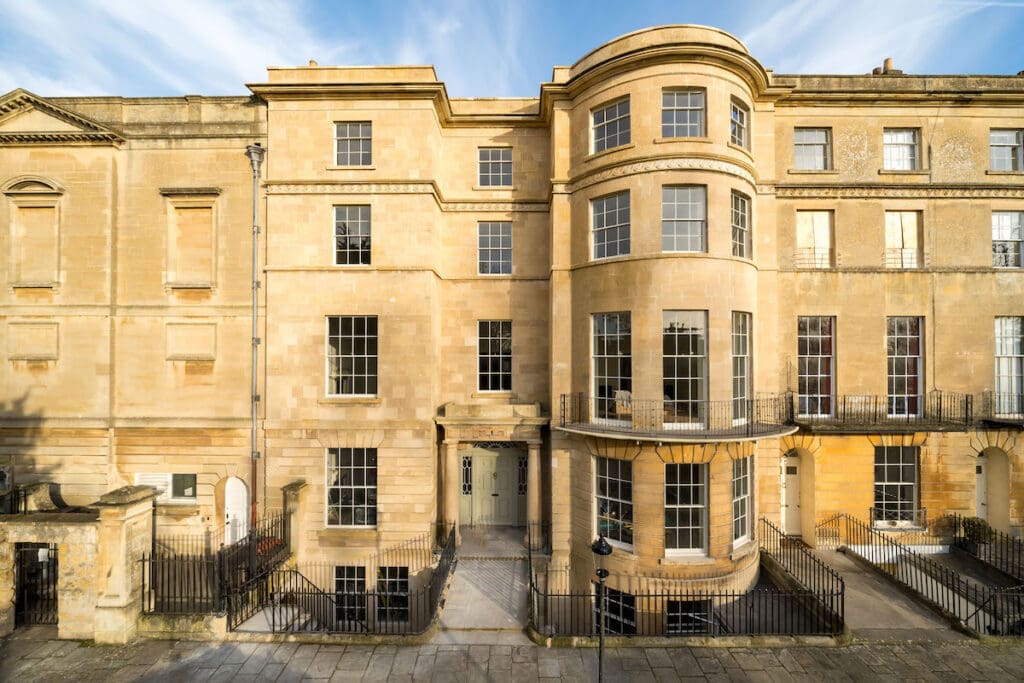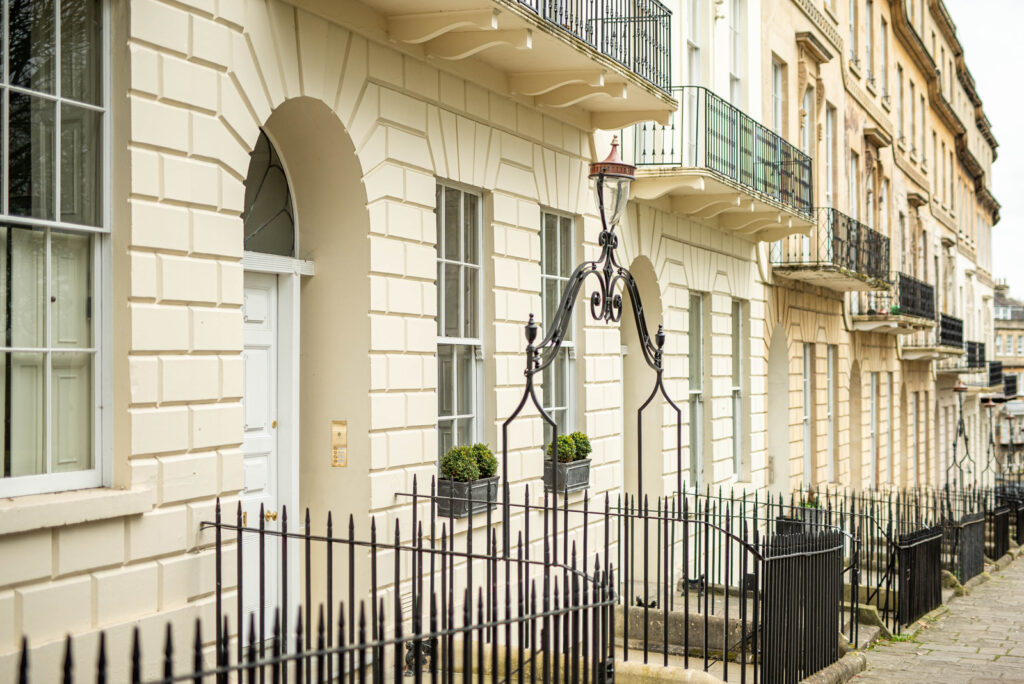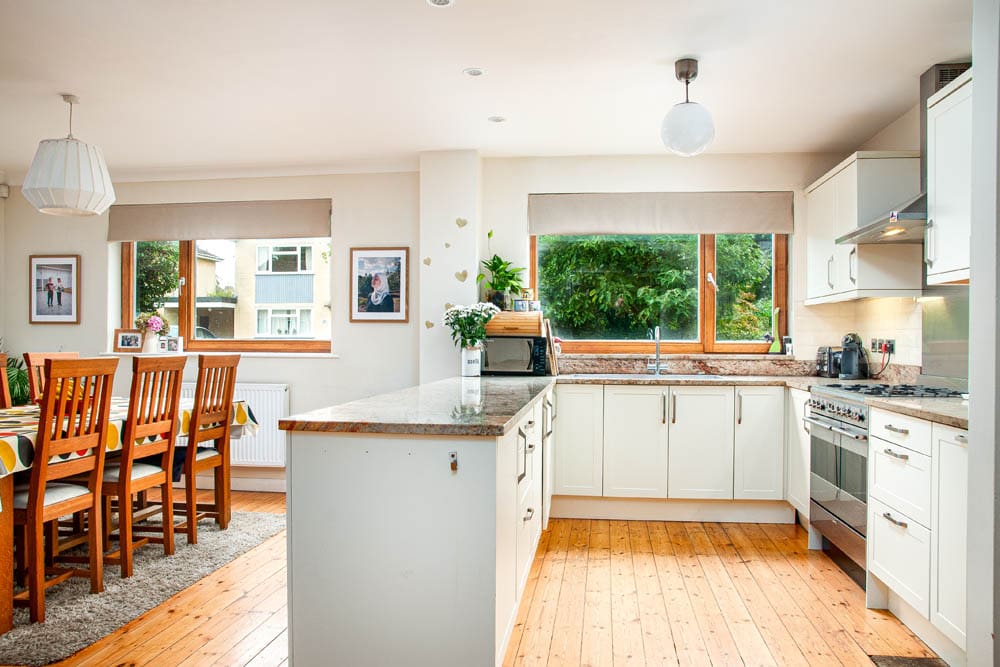Do you own a listed building in Bath, Bradford on Avon, Wiltshire or Somerset and you want to carry out renovations, add an extension or carry out repairs?
If so, you may need to gain Listed Building Consent.
This is a legal requirement when you want to make changes to a listed building or simply carry out maintenance or repairs.
In this article, we’d like to explain what this is, when it’s likely to be needed and how you can apply.
We’ll also be answering your questions about this topic to help you understand your responsibilities as the owner of a listed building.
Listed Building Consent – Explained
Listed Building Consent is permission to carry out proposed work on a Listed Building.
These are buildings that are deemed to have significant historical or architectural importance; they are placed on a national register and protected under the Planning (Listed Buildings and Conservation Areas) Act 1990.
Buildings of this type can be listed at Grade II, II* or I.
- Grade II buildings. The majority of buildings fall into this category. They are buildings of special historical or architectural interest.
- Grade II* buildings. These are buildings that are considered to be of greater importance than Grade II buildings.
- Grade I buildings. These are the rarest types of listed buildings and are of exceptional historical or architectural interest.
Check with your Local Authority Conservation office to find out whether you may need to apply for Listed Building Consent for your property and which changes could be acceptable.

Why is Listed Building Consent required?
Listed Building Consent was introduced to protect listed buildings and preserve their history for future generations.
It allows local authorities and the UK government to monitor and control any alterations, repairs or modifications and ensure the building retains its character and significance.
How is it different from regular Planning Permission?
Whenever you want to alter, repair or maintain parts of your home, you should consider whether you need to apply for permission to do so.
This applies to all types of buildings, including listed buildings and non-listed buildings.
There are two types of permission you may need:
- Planning permission
- Listed building consent.
To apply for either, you will need to submit an application to your Local Planning Authority.
However, Listed Building Consent focuses on preserving listed buildings and preserving historical and architectural gems.
Planning permission considers how your proposed development or change could impact the local area, neighbours, environment and land use.
You may even require both of these if you’re altering a listed building.
What types of work need Listed Building Consent?
If you are planning to make changes to your home that affect its character as a building of special interest, you are likely to need Listed Building Consent.
This includes work such as:
- Structural changes such as demolitions or extensions.
- Replacing windows, doors or roofs with new materials that differ from the originals.
- Repair work or maintenance that alters the appearance, design or materials used.
- Building or demolishing walls.
- Removing period features from the property.
- Adding features such as lighting, signage or other external features.
Having said that, if you are using original materials and techniques or carrying out maintenance or repairs, you may not require Listed Building Consent. Always check with your Local Planning Authority for advice and guidance on your unique situation.

How do you apply for Listed Building Consent?
Applying for Listed Building Consent is a straightforward process and can be completed in just a few steps.
Step 1. Get advice
First, contact the Local Planning Authority (LPA) to find out whether you need Listed Building Consent, and if so, what are the chances of approval. They will also advise you how to proceed with your application and what documents you may need. You can find the LPA for Bath here, and the LPA for Bradford upon Avon here.
Step 2: Gather the required information
Next, find the information and documentation required by the Local Planning Authority.
This is likely to include:
- Full details of the grading or your listed building. Search the National Heritage List database if you need further information.
- Full detailed description of your planned works. This should include which parts of the building will be affected, existing and proposed materials and finishes, photographs and explanations of the proposed work.
- A detailed site plan and location plan.
- A statement that details whether you own or rent the property and whether anyone else shares ownership or tenancy.
- A Design and Access Statement. This helps the Local Planning Authority understand your proposal and should include key architectural and historic features of your building and why it has been designated a Listed Building.
- A Heritage Impact Assessment to tell the local authority how your proposal could impact this heritage asset.
- Photos and explanations of the proposed work.
Step 3. Make your application
It’s easy to apply. Simply visit the Planning Portal online and submit your application.
Step 4. Wait for approval or refusal
After you’ve submitted your application for Listed Building Consent, a specialist conservation officer will review your case and make a decision whether you can go ahead or not.
If approved, you can start your work immediately on your Listed Building.
If refused, you will be given a detailed explanation why. At this point, you can either accept their decision, revise and resubmit or file an appeal.
How much does it cost to obtain Listed Building Consent?
It’s free to apply and obtain Listed Building Consent.
However, there can often be other costs involved with the process such as applying for planning permission, architect’s fees, heritage consultant’s fees and costs for preparing plans or reports.
How long does it take to obtain Listed Building Consent?
Obtaining listed building consent often requires a site visit and inspection by the listed building office and council officers. They will assess your application in person to ensure that it meets all necessary guidelines and requirements.
If you have been successful, you should be granted listed building consent within 8 weeks but this is frequently subject to change.
This includes a 21-day period where neighbours and other interested parties can comment on your proposal.
However, your application for Listed Building Consent can often take weeks or months due to understaffing or if your proposal includes complex changes or if the Local Planning Authority requires additional information.
If you can get clear on which documents are needed before you make your application and ensure you access these, you can speed up the process.

Can Listed Building Consent be refused?
If your proposed changes to the listed building are deemed potentially detrimental to the character of the building, your listed building consent application could be refused.
However, don’t panic if this happens.
Your Local Planning Authority should provide you with full information on why your application was refused. You can use this information to review and resubmit your application with changes or file an appeal if you believe that a decision was unfair.
What are the penalties for carrying out work on a listed building without consent?
Given the complexity and expense of applying for Listed Building Consent, it can be tempting to go ahead and carry out the work anyway, without obtaining permission.
However, this is a criminal offence, and you could be penalised with unlimited fines, required to undo the work at your own cost or even be prosecuted.
You will also have trouble selling your Listed Building if you have carried out work without receiving the proper permission: this is one of the things that the purchaser’s conveyancing solicitors will be checking for, and they could insist that you obtain permission retrospectively before they are prepared to proceed with the purchase.
Don’t make this mistake! Always gain Listed Building Consent and Planning Permission, if required, before carrying out work to your home.
How can it affect the value of the property?
Listed Buildings are valuable because they have historical significance and unique period features.
By properly maintaining your property and carrying out renovations, you can preserve your home, make it more attractive and increase its market value. However, this is only if you have received the relevant Planning Permission and Listed Building Consent required.
As mentioned above, it could be harder to sell property if you have carried out work without being granted Listed Building Consent first.
When selling your home, you might find that a potential requirement for this can deter many buyers. This is because of the restrictions on renovations, modifications and repairs and potential cost.
Quick tips for buying a listed building
Many people dream of owning their own listed building. Whether this is a beautiful Georgian manor in Bath or a tiny thatched roof cottage in Somerset.
However, as you have seen in this article, the process can be more complex than buying a non-listed building. It can also incur additional expenses which you may not have allowance for in your budget.
Here’s what you should consider before you think about buying a listed building.
- Before you make an offer on a listed building, do your research! Find out what restrictions are in place and what your responsibilities could be.
- Consult experts who are familiar with listed buildings for advice.
- Set a budget. Repair and upkeep can be more expensive for a listed building.
- Plan carefully. If you believe you want to make changes, create a detailed plan, seek guidance and include time required and potential costs.
See our full Guide to Buying a Listed Building here.
Final Thoughts
If you own a listed building or you’re thinking of buying one, you may need to gain Listed Building Consent before you carry out renovations, modifications or other changes.
Free of charge to apply (though you’ll need to pay the relevant planning application fee) and taking on average eight weeks, this process ensures that the beauty of these historic properties is protected for generations to come.
Speak to your Local Planning Authority, enlist the help of experts and then gather the information you need before submitting your application.
Never start work on a listed building without it – this is a criminal offence, and you could be severely penalised.
Buying a listed building with Cobb Farr
Find out more about buying a listed building or historic home in Bath, Bradford on Avon or Somerset by contacting us today on 01225 333332 or 01225 866111.


